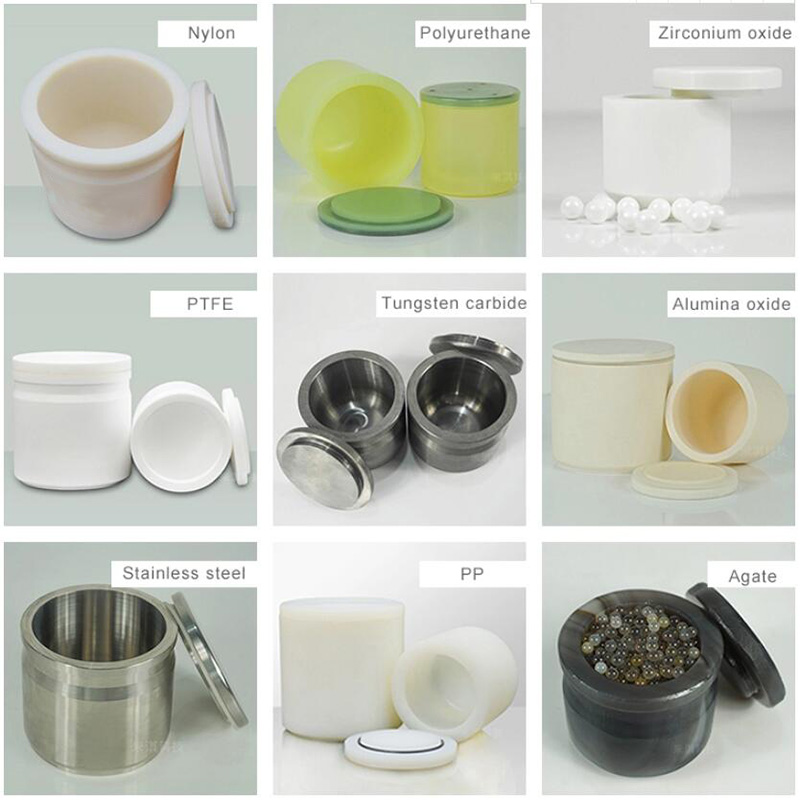-
Apr , 29 2020
Lithium battery anode materials are roughly divided into the following types: 1.The first is carbon anode material: At present, the anode materials that are actually used in lithium ion batteries are basically carbon materials, such as artificial graphite, natural graphite, mesophase carbon microspheres, petroleum coke, carbon fiber, pyrolytic resin carbon, etc. 2.The second is tin-based negative ...
View More
-
May , 04 2020
Which equipment is your best choice for lab lithium battery slurry mixing? Lithium battery cell slurry mixing is a mixing and dispersion process. In the entire production process of lithium ion batteries, the impact on the quality of the product is greater than 30%, which is the most important link in the entire production process. So, how to choose a correct equipment for your lab battery researc...
View More
-
May , 09 2020
What is the thickness of aluminum foil and copper foil for lithium battery? With the rapid development of lithium batteries in recent years, current collectors for lithium batteries have also developed rapidly. The positive electrode aluminum foil has been reduced from 16um to 14um, then reduced to 12um in previous years, and now many battery manufacturers have already mass-produced 10um aluminum ...
View More
-
May , 10 2020
What are the requirements for surface roughness of copper and aluminum foils for lithium batteries? For the lithium ion battery current collector, in addition to its thickness and weight having an influence on the battery, the surface performance of the current collector has a greater influence on the production and performance of the battery. Especially for the negative electrode current collecto...
View More
-
Feb , 16 2022
In the structure of lithium batteries, the separator is one of the key inner layer components. The performance of the lithium battery separator(celgard 2400,celgard 2325,celgard 2500)determines the interface structure and internal resistance of the battery, which directly affects the capacity, cycle and safety performance of the battery. The separator with excellent performance plays an important ...
View More
-
 Mar , 07 2022
Mar , 07 2022
Ball mill is an optimal equipment for battery research institutes, universities and enterprises to obtain battery material particle research samples. Zirconia tank: 1450-1500 degrees, normal work below 100 degrees, except for special requirements, Mohs hardness 9. More suitable materials: 1. Medicine (Chinese medicine or Western medicine), 2. Glass powder, etc., which are widely used, and both met...
View More
-
Mar , 18 2022
The uneven coating of lithium iron phosphate batteries not only leads to poor battery consistency, but also relates to issues such as design and use safety. Therefore, the control of coating uniformity in the production process of lithium iron phosphate battery is very strict, and the following items can be tried: 1. Use "linear" conductive agent "Linear" conductive agents are used, mainly VGCF (c...
View More
-
Mar , 22 2022
The advantages of graphene for direct lithium storage: 1)High specific capacity: Li-ion has non-stoichiometric ratio of intercalation and de-intercalation in graphene, and the specific capacity can reach 700~2000 mAh/g; 2)High charge-discharge rate: The interlayer distance of the multilayer graphene material is significantly larger than that of graphite Most studies have also shown that the capaci...
View More
-
Apr , 01 2022
At present, there are three main types of lithium-ion batteries: square lithium batteries, cylindrical lithium batteries, and pouch cell lithium batteries. Among them, the square and cylindrical shells are mainly made of hard shells such as aluminum alloy and stainless steel, while the shells of soft packs are made of Aluminum Laminated. The important advantages of soft pack lithi...
View More
-
Apr , 09 2022
The tab is a component of a pouch cell lithium-ion battery product. The battery is divided into a lithium battery anode materials and lithium battery cathode materials. The electrode ear is a metal conductor that leads the positive and negative electrodes from the battery core. In layman's terms, the ears of the positive and negative electrodes of the battery are the contact points during charging...
View More
-
Apr , 21 2022
Lithium iron phosphate battery refers to a lithium ion battery that uses lithium iron phosphate as a positive electrode material. The battery cathode materials of lithium-ion batteries mainly include lithium cobalt oxide, lithium manganate, lithium nickel oxide, ternary materials, lithium iron phosphate, etc. Among them, lithium cobalt oxide is the cathode material used in the vast majority of lit...
View More
-
Apr , 26 2022
As a new generation of green high-energy rechargeable batteries, lithium-ion batteries have the characteristics of high voltage, high energy density, good cycle performance, small self-discharge, and no memory effect. The main way to improve the specific energy of lithium-ion batteries is to use higher-capacity positive and anode battery materials, thinner separator paper, thinner copper foil and ...
View More
 Mar , 07 2022
Mar , 07 2022


